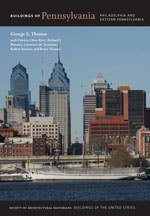
The plantation had its beginning during the tenure of Ralph Lewis, whose son Evan sold the property to fellow Quaker Joseph Pratt. The plantation includes a number of buildings, among them a stone cabin that may have been the first settlement house of the Lewis family. The steep pitch of its gabled roof suggests that it was thatched originally, a common English roofing technique. The Pratts’ stone farmhouse expanded over 130 years from its first beginnings as a single southfacing cell with a pent eave across its center. An east addition providing more public space was followed by a one-story western kitchen addition with a walk-in fireplace and separate stair to the upper levels. It was later given a second story, creating a unified roof line the length of the house. The result is a visually satisfying building that looks like other stone English houses from the early settlements in Chester and Bucks counties. The property includes a stone springhouse, wooden stable, and wooden barn. Other outbuildings are constructed of local stone. The complex is operated by the Bishop's Mills Historical Institute.

